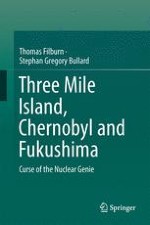2016 | OriginalPaper | Buchkapitel
2. Why Pressurized Water?
verfasst von : Thomas Filburn, Stephan Bullard
Erschienen in: Three Mile Island, Chernobyl and Fukushima
Aktivieren Sie unsere intelligente Suche, um passende Fachinhalte oder Patente zu finden.
Wählen Sie Textabschnitte aus um mit Künstlicher Intelligenz passenden Patente zu finden. powered by
Markieren Sie Textabschnitte, um KI-gestützt weitere passende Inhalte zu finden. powered by
